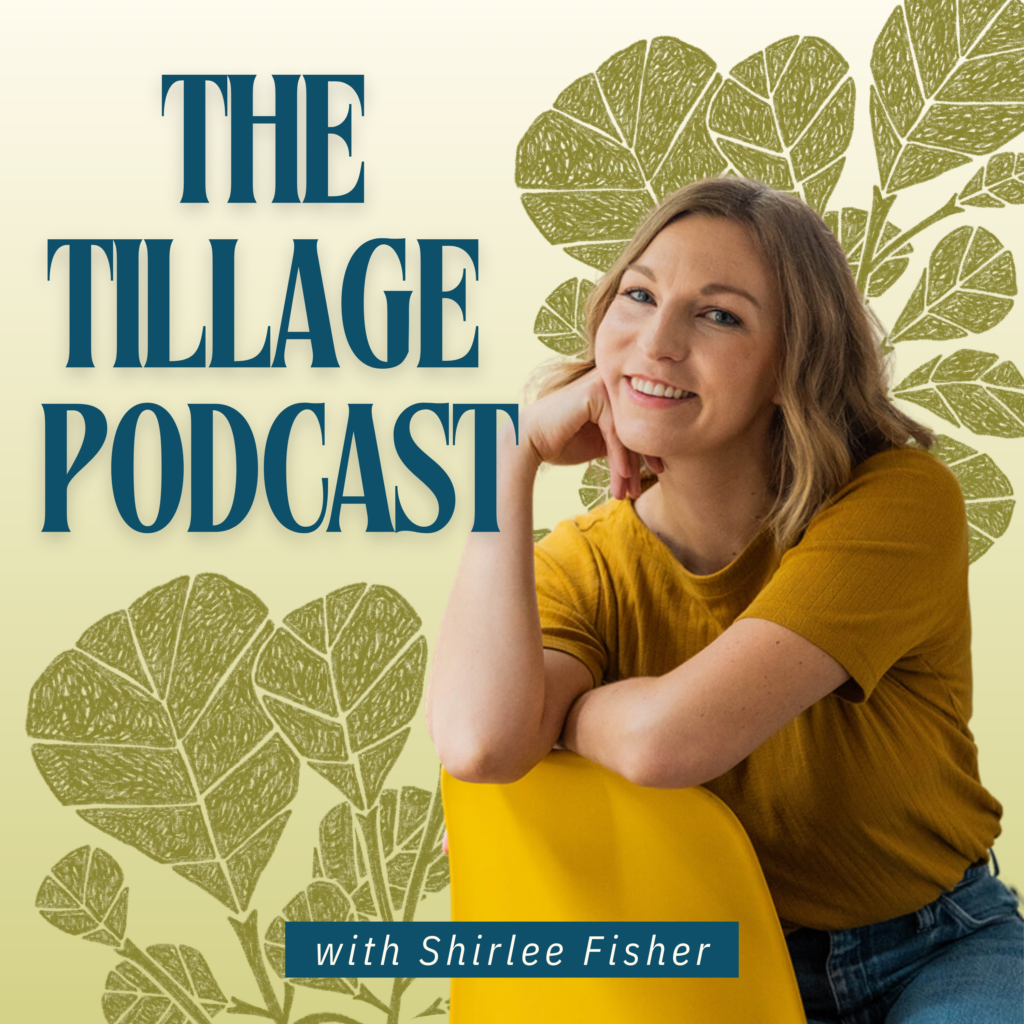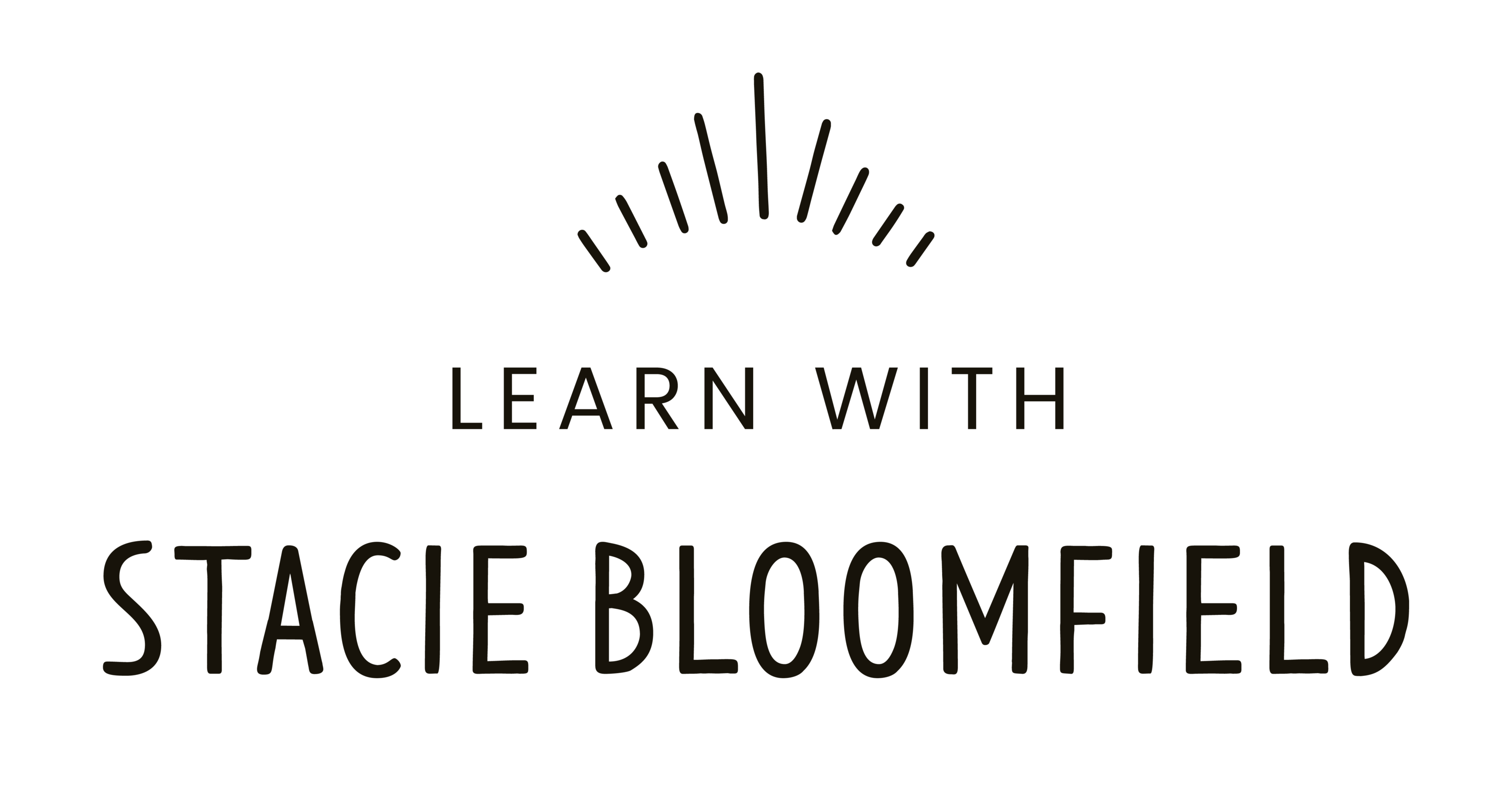This website uses cookies so that we can provide you with the best user experience possible. Cookie information is stored in your browser and performs functions such as recognising you when you return to our website and helping our team to understand which sections of the website you find most interesting and useful.
Hey, friend!
I'm Stacie Bloomfield
I am the owner and illustrator of Gingiber. I have been an illustrator for 15+ years and have successfully sold my artwork across several categories such as art licensing, wholesale, direct to customer sales, direct downloads, books, teaching, and more. I cannot wait to teach you how to do the same!
Categories
In this special episode, we dive into a presentation by Stacie, originally delivered in “The Tillage Village Membership” with host Shirlee Fisher. Stacie explores a fascinating topic that many of us grapple with procrastination. But this isn’t just about pushing off tasks; it’s about understanding how procrastination can be harnessed to boost productivity, foster creativity, and even improve our mental well-being.
The Truth About Procrastination
Stacie starts by acknowledging something many of us have experienced: procrastination can feel like an unavoidable part of life. It’s often viewed negatively, but it doesn’t always have to be. According to Stacie, procrastination falls into two categories: negative procrastination, where delays lead to stress and poor outcomes, and positive procrastination, where intentional delays can actually help us achieve better results.
She shares a personal story about her own struggles to launch a podcast. For months, she felt paralyzed by the pressure to meet deadlines, which made it difficult to produce the content she envisioned. However, when she decided to delay the launch, the pressure lifted, and she found herself more motivated and inspired to record. This, she realized, was the power of positive procrastination in action.
Understanding Negative vs. Positive Procrastination
Stacie breaks down the difference between the two types of procrastination:
- Negative Procrastination: This is the kind of delay we often associate with avoidance and anxiety. It usually results in stress and can be linked to underlying issues like depression or ADHD. For example, putting off difficult conversations can exacerbate stress and worsen the problem.
- Positive Procrastination: This form involves purposefully delaying tasks that aren’t urgent to make room for more fulfilling activities. Stacie explains that structured procrastinators often accomplish a lot by working around tasks, which can reduce guilt and increase self-esteem. She highlights Dr. John Perry’s idea that “procrastinators are doers,” noting that people often achieve more when they embrace this natural tendency.
How Positive Procrastination Can Boost Creativity
Stacie emphasizes that creatives can particularly benefit from positive procrastination. She notes that forcing oneself to start on a task too early can result in wasted time and frustration. Giving herself space to think allowed her to generate fresh, innovative ideas for projects, like planning a new course or program.
Research even supports this approach; studies show that moderate procrastination often leads to more creative outcomes. Stacie shares how she uses “brain dumps” each night to offload her thoughts and organize tasks for the following day. This method helps her identify the most important tasks without feeling overwhelmed by the entire list.
The Science Behind Positive Procrastination
Drawing on insights from various experts, including Arthur C. Brooks and Dr. Perry, Stacie explains how positive procrastination can be a tool for growth:
- Allowing ideas to incubate: Waiting before diving into a task gives time for the best ideas to emerge. The first concepts are often too obvious or generic, but letting them simmer can produce more original solutions.
- Working with natural ebbs and flows: For those who thrive on creativity, being in a flow state is essential. Forcing tasks when inspiration is lacking can lead to poor-quality work. Stacie encourages setting aside specific times for creative activities rather than forcing daily practice.
Techniques for Overcoming Negative Procrastination
Although not all procrastination is helpful, Stacie shares strategies for breaking the cycle of negative procrastination:
- Set SMARTER Goals: Goals should be specific, measurable, attainable, relevant, time-bound, evaluated, and revised as needed.
- Break Tasks into Manageable Steps: Avoid feeling overwhelmed by focusing on small, achievable actions.
- Plan Time Intentionally: Creatives may shy away from structure, but some level of planning is necessary to ensure progress.
- Communicate and Adjust Deadlines: If a deadline isn’t realistic, change it. Open communication can prevent stress and improve productivity.
The Role of Self-Image in Procrastination
Stacie also delves into the psychological aspect of procrastination, referencing Psycho-Cybernetics by Maxwell Maltz. The book discusses how a person’s self-image affects their ability to achieve goals. When procrastination is rooted in fear or self-doubt, it often stems from negative experiences or internalized limitations. Stacie encourages embracing positive affirmations and reinforcing a self-image that aligns with the person you aspire to be.
She shares a simple yet powerful practice: looking in the mirror each day and saying, “I love you, Stacie. You’re doing a really good job, and I’m proud of you.” This daily ritual reinforces a positive self-image and helps transform procrastination from a negative force into a productive tool.
Final Thoughts
Procrastination doesn’t have to be the enemy of productivity. By understanding the difference between negative and positive procrastination and learning how to harness intentional delays, we can turn what seems like a flaw into an asset. As Stacie puts it, “Procrastination is not about delaying tasks indefinitely; it’s about delaying them to skyrocket productivity.”
For creatives, allowing time for ideas to marinate and resisting the urge to jump into tasks immediately can be the key to achieving meaningful and impactful work.
Learn more about The Tillage Village
The Tillage Village is a community membership hosted by Shirlee Fisher for artists and creative entrepreneurs who desire support, mentorship, and professional development on their journey.

Shirlee Fisher is an illustrator and owner of the stationery brand, Quiet Lines Design, where she sells her products in over 250 shops in the US and Canada, including Paper Source and Anthropologie. She also hosts the beloved show, “The Tillage Podcast, ” which has become a place providing mindset shifts, self-development, and encouragement to the creative entrepreneur.
